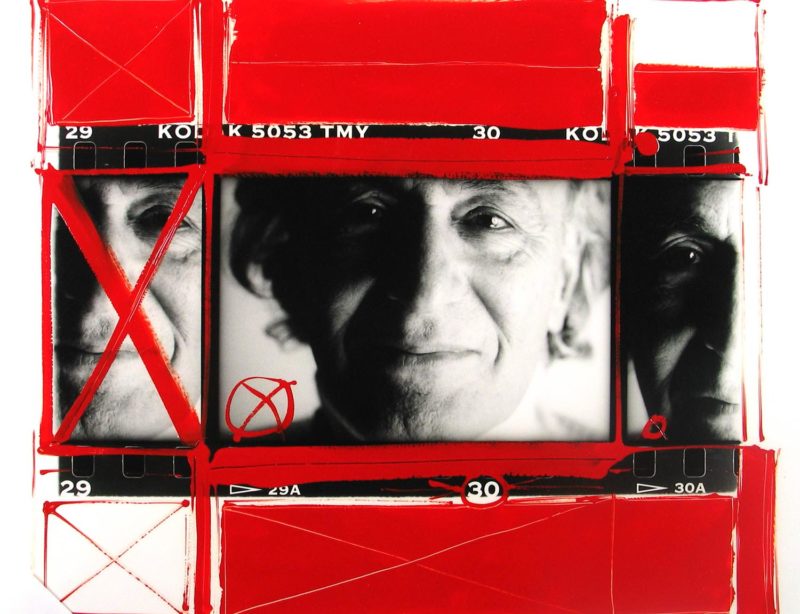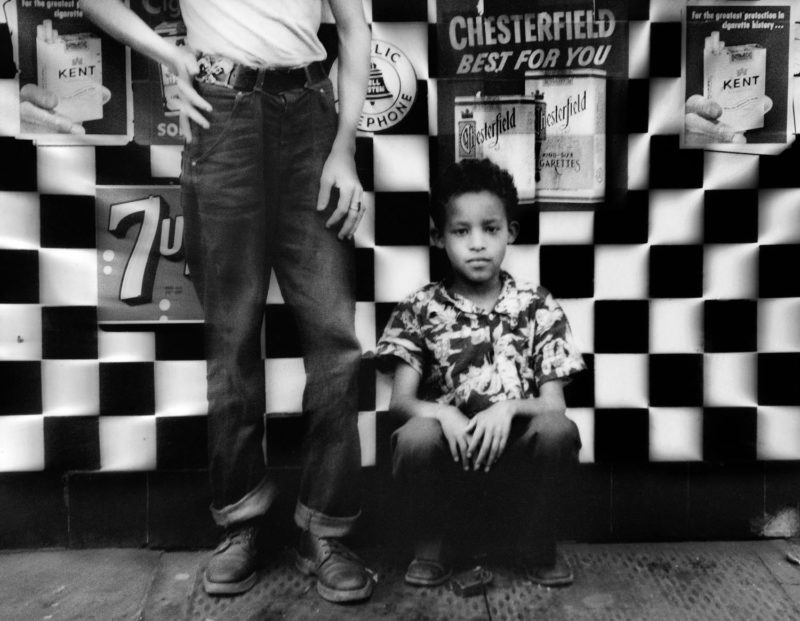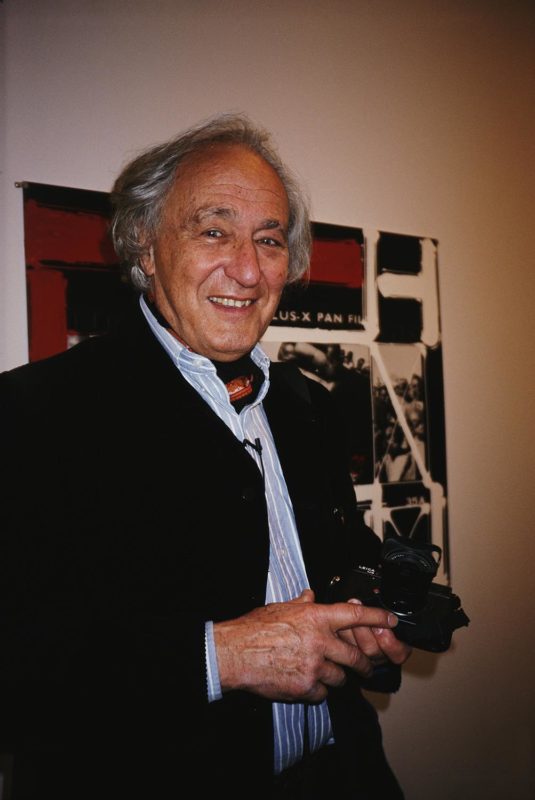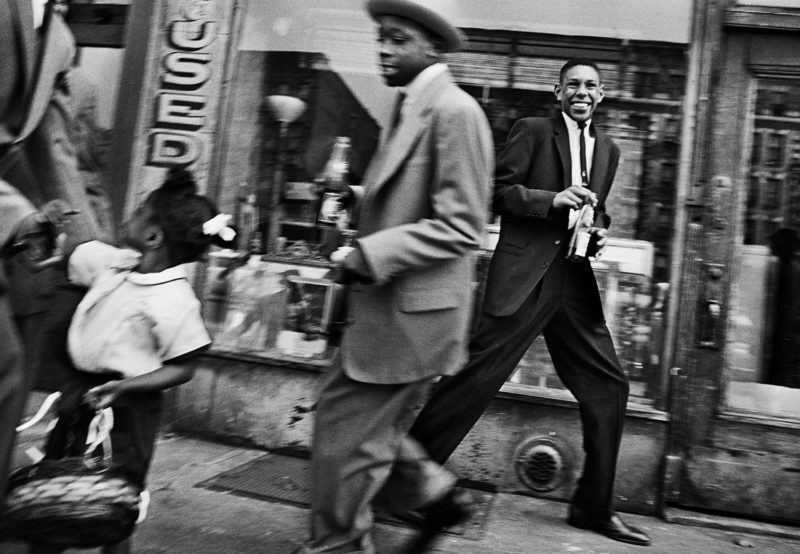
Photography
A New York Homecoming
A major retrospective celebrates artist William Klein’s 65-year career capturing the vivacity and complexity of New York City.
Whether in his street and fashion photography, paintings, or documentaries, William Klein has defied artistic conventions in his lifelong quest to satiate his social curiosity. This summer, the International Center of Photography is staging New York’s first retrospective dedicated to the trailblazing image maker who captured the city’s potential and tensions like no other.
“Sometimes a photographer is so influential that you don’t see their influence anywhere because it’s everywhere,” says David Campany, the Curator at Large of New York’s International Center of Photography (ICP), when asked about the legacy of William Klein. “It’s impossible to imagine the landscape of street photography or fashion photography without him.”
The Manhattan-born photographer has spent over six decades documenting the bustling streets of New York, Rome, Moscow, Tokyo, and Paris. Nearly 300 works from the artist’s genre-defying career will be showcased in William Klein: YES; Photographs, Paintings, Films, 1948–2013, opening Friday, June 3.
The show marks the first time the ICP is devoting the entirety of its new Lower East Side space (where it relocated in 2020) to a single artist. It’s also Klein’s first U.S. retrospective—an honor that’s been a long time coming, per Campany.


“It often takes a while for very versatile artists to be recognized. Beyond photography, Klein produced documentaries and three feature films, he’s a painter and writer, and he has made his own books,” says Campany. “Klein was also a New Yorker who left. America doesn’t really keep an eye on those that make their name elsewhere.”
At 94, Klein rarely gives interviews these days, but Campany came to know the artist personally while writing Photography and Cinema (Reaktion Books; 2008) and the two worked closely together to bring the ICP’s exhibition to life. Primarily organized chronologically, YES illuminates Klein’s connection to New York in photographs and films, including Broadway by Light, his first film project in 1958.
Coincidentally, the artist’s late grandfather, a Hungarian immigrant, ran a clothing store on Delancey Street, steps from the ICP’s new Essex Street location. According to his studio assistant, Klein “wishes he could show his grandfather his exhibition nearby—100 years later!”

Born in Harlem in 1928, Klein often gravitated to diverse neighborhoods and subjects, particularly in the Black community.
In 1964, he produced a seminal documentary on the young Cassius Clay (later Muhammad Ali) which led to his being offered to make a film for the Pan African Festival of Algiers in 1969, followed by a 1970 film on Eldridge Cleaver, the exiled minister of information for the Black Panther Party, as well as gender-non-conforming rock star Little Richard in 1980.
While he has lived in Paris since 1948—after being stationed there by the U.S. Army—Klein returned to New York in 1954, when American Vogue tapped him to bring his avant-garde eye to its rarefied pages. Upon experiencing the Post War consumer boom in the midst of increasing social divisions, Klein simultaneously began photographing New York City streets, much like a cosmopolitan Robert Frank but with less melancholia.
Klein’s signature, multi-narrative shots encapsulate the freneticism, restlessness, and hustle of city residents. Many are found in Life is Good and Good for You in New York: Trance Witness Revels, the 1956 book for which Klein also conceived the layout and wrote the captions, explicitly critiquing the city.
“Imagine in 1950s America, presenting [a] view of New York, not as a shining bauble, but actually quite tarnished. He loved the energy of the city, but there was so much dysfunction,” says Campany.
American publishers, understandably, turned the book down. It wound up getting published in Paris, Milan, and London instead, and has since become, “perhaps the most influential photographic book ever.”

One of the images that didn’t make the book—simply because Klein had overlooked it on his contact sheets—has also gone on to become one of the photographer’s most-famous portraits. Titled Moves and Pepsi, Harlem, New York, the 1955 shot (shown, above) focuses on a suited man, mid-stride, while flashing a large, jubilant smile and locking eyes with the cameraman.
“It could have been the book’s cover image. You can feel how Klein was there in the moment,” says Campany. “It’s what I call a ‘minor miracle,’ but there are so many ‘how-did-you-get-that’ moments in Klein’s street photographs.”
As evidenced by his street and fashion photography—and especially in his cult-favorite 1966 satirical fashion mockumentary, Qui êtes-vous, Polly Maggoo?—an irreverent, collaborative quality came to define Klein’s work.
“So much of it is about human frailty and resilience. When he was working with models or actors, he wasn’t just saying, ‘stand there demurely in the studio.’ It was like, ‘let’s go into the street, let’s break down some barriers,’” says Campany.
“He’s never trying to be invisible. He’ll go up to people, whether it’s kids in Harlem or rich people at a party, and the image comes out of that interaction. That give-and-take between the photographer and the world is how a lot of image makers and filmmakers are today. Nobody tries to be a fly on the wall anymore.”


The same can also be said of Klein’s more recent subjects, photographed in Brooklyn in the summer of 2013 across parades, tattoo parlors, barber shops, bar mitzvahs, Coney Island, and more. “You would never know it was an 84-year-old guy taking these. I don’t know many image makers who sustained that kind of energy and hunger.”
Despite moving to Paris and identifying as European, Campany says Klein still very much considers himself a New Yorker—although his relationship to his homeland is complicated.
“He feels America never quite lived up to its promise, that it squandered so much of its potential, for example, with racial divisions. There’s definitely a thread throughout Klein’s work where you can see this deep affection and deep disappointment with America. But who doesn’t feel that right now?”
William Klein: YES; Photographs, Paintings, Films, 1948–2013 runs at the International Center for Photography at 79 Essex Street from June 3–September 12, 2022. Get a timed ticket here.
Hero image: William Klein, Auto-Portrait, 1993. © William Klein, Courtesy Howard Greenberg Gallery



